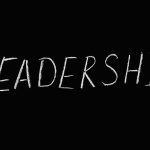Trump’s Approach to Protesters: Lessons from the 2017 Inauguration
Trump’s Approach to Protesters: Lessons from the 2017 Inauguration
Introduction
The 2017 inauguration of Donald Trump as the 45th President of the United States was marked by widespread protests. This event offers valuable insights into Trump’s approach to handling dissent and public demonstrations.
Key Strategies and Tactics
Trump’s administration employed several strategies to manage the protests during his inauguration. These tactics reveal much about his broader approach to civil unrest.
- Heavy Police Presence: A significant law enforcement presence was deployed to maintain order and deter potential violence.
- Legal Actions: Numerous arrests were made, and legal actions were taken against protesters, highlighting a zero-tolerance policy.
- Media Strategy: The administration sought to control the narrative by emphasizing law and order and downplaying the scale of the protests.
Impact on Public Perception
The handling of the 2017 protests had a lasting impact on public perception of Trump’s presidency and his stance on civil liberties.
- Polarization: The aggressive response to protesters contributed to further polarization among the American public.
- Support Base: Trump’s firm stance resonated with his core supporters, reinforcing his image as a strong leader.
- Civil Liberties Concerns: Critics raised concerns about the implications for free speech and the right to protest.
Lessons Learned
The 2017 inauguration protests provide several lessons for future administrations in handling public dissent.
- Balance of Power: The importance of balancing law enforcement with respect for civil liberties.
- Communication: The need for clear and transparent communication to manage public perception effectively.
- Long-term Implications: Understanding the long-term impact of protest management on public trust and political polarization.
Conclusion
The 2017 inauguration protests serve as a case study in the complexities of managing public dissent. Trump’s approach, characterized by a strong law-and-order stance, had significant implications for public perception and civil liberties. Future leaders can learn from these events to better navigate the delicate balance between maintaining order and respecting democratic freedoms.


















